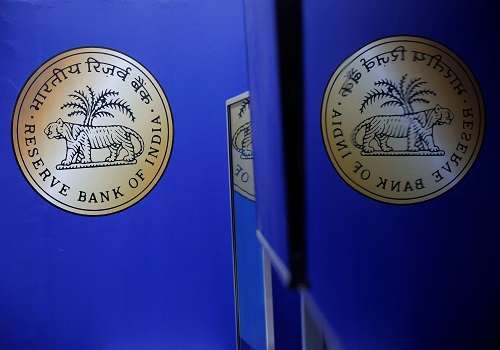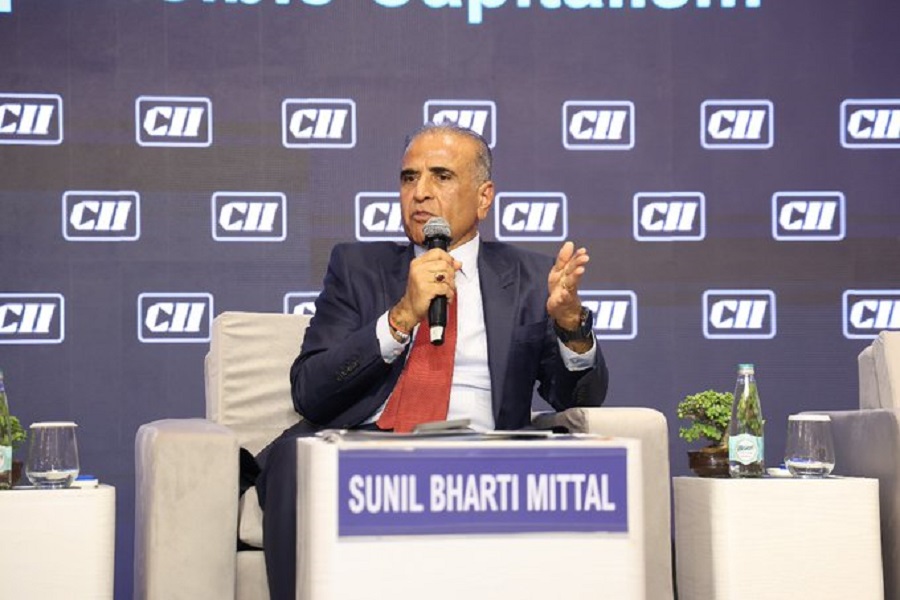Zinc trading range for the day is 215.1-221.7. - Kedia Advisory

Gold
Gold prices settled up by 0.14% at 66114 as investor attention shifts towards upcoming U.S. inflation data, crucial for gauging the Federal Reserve's stance on interest rates. Despite recent high inflation readings, Fed policymakers remain committed to reducing interest rates by three-quarters of a percentage point by the end of 2024. Chicago Fed Bank President Austan Goolsbee's projection of three rate cuts this year reflects a cautious approach to monetary policy, echoed by Fed Governor Lisa Cook's emphasis on careful decision-making. Investors are eagerly awaiting the U.S. core personal consumption expenditure price index data, which is expected to maintain an annual pace of 2.8%, providing further insights into the Fed's potential actions. With a 70% probability of rate cuts beginning in June, according to the CME Group's FedWatch Tool, market sentiment is sensitive to economic indicators shaping monetary policy expectations. In the commodities market, COMEX gold speculators reduced their net long positions, reflecting a nuanced stance amid evolving market dynamics. Swiss gold exports in February saw a decline from an eight-year high, with a notable increase in exports to India, driven by demand ahead of the wedding season. From a technical perspective, gold experienced short covering as evidenced by a drop in open interest by -22.44% to settle at 6055, coupled with a price increase of 92 rupees. Currently, gold finds support at 65850, with potential testing of 65585 levels below, while resistance is anticipated at 66410, with the possibility of prices reaching 66705 upon surpassing this level.
Trading Ideas:
* Gold trading range for the day is 65585-66705.
* Gold steadied as investor focus turns to U.S. inflation data
* U.S. consumer confidence falls to 104.7
* Fed policymakers indicated they still expected to reduce interest by three-quarters of a percentage point by 2024 end despite recent high inflation readings
Silver
Silver prices experienced a modest decline of -0.54% yesterday, settling at 74518, as investors closely monitored speeches from Federal Reserve officials and awaited the release of key PCE inflation data to gauge the potential timing of monetary easing. The Fed's previous guidance for three interest rate cuts in 2024 increased the attractiveness of holding non-yielding assets, contributing to market sentiment. Expectations for a June interest rate reduction have surged to around 70%, compared to 55% prior to the recent Fed meeting, indicating market anticipation of accommodative monetary policy. Fed Governor Lisa Cook emphasized the need for cautious deliberation regarding interest rate adjustments, echoing sentiments within the central bank about the complexity of the decision-making process. Atlanta Fed President Raphael Bostic's revised projection of a single quarter-point rate cut contrasts with previous expectations of two cuts, highlighting the evolving outlook for monetary policy amidst changing economic conditions. Key economic indicators from the United States provided mixed signals, with sales of new single-family houses easing slightly below expectations, while building permits rose to their highest level since August. These data points contribute to the broader economic narrative, influencing market expectations for future Fed actions. Technically, the silver market witnessed long liquidation, indicated by a decrease in open interest alongside a decline in prices. Support levels are identified at 74115 and 73715, while resistance is expected at 75080 and potentially 75645.
Trading Ideas:
* Silver trading range for the day is 73715-75645.
* Silver dropped ahead of Fed's officials speeches and key PCE inflation
* The yield on the US 10-year Treasury note edged up to 4.25%.
* Data showed activity in the U.S. manufacturing sector beating expectations across the board in February.
Crude oil
Crude oil prices settled marginally lower by -0.1% at 6817 as investors weighed the impact of recent Ukrainian attacks on Russian refinery capacity. Russia, a key player in global oil production and exports, faces challenges in meeting production targets due to disruptions caused by attacks on its oil infrastructure by Ukraine. The Ukrainian attacks have led to the shutdown of approximately 14% of Russia's total refining capacity, adding pressure to global oil markets. Amid these geopolitical tensions, Russia's government has ordered companies to reduce output in the second quarter to comply with commitments made to the OPEC+ group. However, the situation remains volatile as Russia retaliates with attacks on Ukrainian energy infrastructure. In the US, crude oil stockpiles unexpectedly declined last week, supported by increased exports and rising refinery activity. The Energy Information Administration (EIA) reported a 2 million barrel decrease in crude inventories, with gasoline inventories also falling more than anticipated. Technically, the crude oil market witnessed long liquidation, with a notable drop in open interest by -17.37% to settle at 3406, accompanied by a decrease in prices by -7 rupees. Currently, crude oil finds support at 6785, with the potential for testing 6753 levels below, while resistance is expected at 6854, with a potential move towards 6891 upon surpassing this level. This technical overview indicates a market grappling with geopolitical uncertainties and supply disruptions, with traders closely monitoring developments for potential shifts in oil prices.
Trading Ideas:
* Crudeoil trading range for the day is 6753-6891.
* Crude oil steadied as investors assessed the impact of recent Ukrainian attacks on Russian refinery capacity.
* Russia's government ordered companies to cut output in Q2 to meet a 9 mbpd target to comply with pledges to the OPEC+ group.
* Russian oil refining capacity shut down by Ukrainian attacks has reached 14% of the country's total capacity.
Natural gas
Natural gas prices experienced a marginal decline of -0.13% yesterday, settling at 150.7, primarily attributed to sluggish demand and an oversupply of domestic inventory. The prolonged offline status of two liquefaction trains at the Freeport LNG export plant in Texas until May has constrained the country's export capacity, exacerbating the surplus in domestic supply levels. Factors such as a mild winter, robust gas production, strong hydropower output, and ample beginning stocks have contributed to natural gas storage levels surpassing the five-year average by over 41% as per EIA weekly data. This surplus prompted US utilities to increase inventories for the first time since November, countering the seasonal inventory depletion trend. LSEG reported a decline in gas output in the Lower 48 U.S. states to an average of 100.3 billion cubic feet per day (bcfd) in March, down from 104.1 bcfd in February, although still above historical averages. Despite meteorologists projecting colder-than-normal weather across the Lower 48 through April 9, seasonally warmer conditions are anticipated thereafter, leading LSEG to forecast a decrease in gas demand to 109.0 bcfd by the following week. From a technical standpoint, the natural gas market observed fresh selling pressure, marked by an increase in open interest alongside a slight decline in prices. Key support levels are identified at 149.2 and 147.7, while resistance is anticipated at 152.8 and potentially 154.9. These technical indicators suggest a bearish sentiment prevailing in the market, with potential for further downside movement in the near term.
Trading Ideas:
* Naturalgas trading range for the day is 147.7-154.9.
* Natural gas dropped due to sluggish demand and a surplus of domestic supply.
* The Freeport LNG export plant in Texas has announced that two of its three liquefaction trains will be offline until May.
* Gas output in the Lower 48 U.S. states fell to an average of 100.3 bcfd so far in March, down from 104.1 bcfd in February.
Copper
Copper prices settled lower by -0.37% at 757.7 amid expectations of looser monetary policy and a strengthening dollar, dampening investor sentiment towards the industrial metal. Additionally, rising inventories in LME warehouses, reaching their highest levels since February, exerted downward pressure on copper prices. The widening discount of LME cash copper to the three-month contract, the largest since at least 1982, underscored concerns about near-term oversupply. Despite a slight decline in SHFE warehouse inventories, copper stocks remained elevated, reflecting robust Chinese production and imports. While Chinese refineries have maintained production levels in March, consumption has been slow to rebound, signaling a potential slowdown in inventory accumulation. Attention now turns to the pace of maintenance activities by Chinese smelters in the second quarter, which could impact supply dynamics. In the futures market, However, the global refined copper market recorded a surplus of 84,000 metric tons in January, compared to a surplus of 27,000 metric tons in December, according to the ICSG, indicating ongoing challenges in balancing supply and demand. Technically, the copper market witnessed long liquidation, with a decrease in open interest by -3.54% to settle at 4438, alongside a decline in prices by -2.8 rupees. Currently, copper finds support at 755.5, with the potential for testing 753.3 levels below, while resistance is expected at 760.6, with a potential move towards 763.5 upon surpassing this level.
Trading Ideas:
* Copper trading range for the day is 753.3-763.5.
* Copper dropped due to expectations of China’s easier monetary policy.
* Prices pressured by rising LME inventories, which were last at 117,900 tons, the highest since Feb. 29.
* The discount of LME cash copper to the three-month contract expanded to $115.37 a ton, the biggest discount since at least 1982.
Zinc
Zinc prices faced downward pressure yesterday, declining by -1.41% to settle at 217.5, as the global zinc market transitioned into a surplus of 58,700 metric tons in January, contrasting with a deficit in the previous month. Data from the International Lead and Zinc Study Group (ILZSG) revealed this shift, highlighting changing supply-demand dynamics. Exchange stocks of zinc in Shanghai also saw an uptick, nearing levels observed in previous years, indicating a potential increase in supply. The suspension of operations at Glencore Plc's McArthur River zinc and lead mine in Australia due to heavy rainfall further strained the supply of zinc concentrates, crucial for refined zinc production. Additionally, Peruvian miner Volcan's suspension of three mines compounded supply concerns, reflecting broader disruptions in the zinc mining sector. Delays in the commencement of the major Russian zinc mine Ozernoye and the suspension of Europe's largest zinc mine Tara further tightened the supply of mined zinc, exacerbating market conditions. From a technical perspective, the zinc market witnessed fresh selling pressure, as indicated by an increase in open interest alongside a decline in prices. Key support levels are identified at 216.3 and 215.1, while resistance is anticipated at 219.6 and potentially 221.7. These technical indicators suggest a bearish sentiment prevailing in the market, with potential for further downside movement in the near term.
Trading Ideas:
* Zinc trading range for the day is 215.1-221.7.
* Zinc dropped as global zinc market moved to a surplus of 58,700 metric tons in January.
* Glencore Plc has halted operations at its McArthur River zinc mine in Australia following heavy rainfall
* Exchange stocks of zinc in Shanghai crept a little higher in the week to 121,873 tons
Aluminium
Aluminium prices experienced a decline of -1.1% to settle at 206.95, as investors monitored signals of demand recovery in China, the world's largest metals consumer. Concerns lingered over the slow recovery of production in China's Yunnan province due to dry weather conditions restricting hydropower supply, thus limiting downside pressure on prices. The uncertainty surrounding demand from China underscores the importance of the upcoming purchasing managers' index data, scheduled for release this Sunday, in providing insights into manufacturing activity. A notable development in the aluminium market was a significant increase in the premium paid by a Japanese aluminium buyer to a global producer for shipments in April to June, signaling tightening supply dynamics. This premium surged by 61% compared to the previous quarter, reflecting the market's anticipation of supply constraints and increased production costs. On the supply side, global primary aluminium output in February rose by 3.9% year-on-year, according to data from the International Aluminium Institute (IAI). However, the share of available aluminium stocks of Russian origin in LME-approved warehouses increased to 91% in February, accompanied by a rise in Russian primary aluminium stocks on LME warrant. From a technical perspective, aluminium witnessed fresh selling pressure, with a notable increase in open interest by 7.72% to settle at 3462, alongside a price decline of -2.3 rupees. Currently, aluminium finds support at 205.8, with the potential for testing 204.5 levels below, while resistance is anticipated at 208.9, with the possibility of prices reaching 210.7 upon surpassing this level.
Trading Ideas:
* Aluminium trading range for the day is 204.5-210.7.
* Aluminium dropped as investors waited for signals that demand was recovering in China.
* However, downside seen limited amid concerns over slow recovery in production in China's Yunnan province.
* Montefusco cited market concerns about the pace of aluminium smelters in draught-hit Yunnan province restoring 500,000 metric tons of annual production
Cotton
Cotton candy prices surged by 0.87% to settle at 62520, driven by positive developments in both domestic and global markets. The Cotton Corporation of India (CCI) reported significant procurement of cotton, primarily from Telangana, Andhra Pradesh, and Maharashtra, signaling robust domestic demand. Additionally, the Cotton Association of India (CAI) revised its cotton production estimates upwards for the current season, projecting higher production levels than previously anticipated. This upward revision in production forecasts contributed to market optimism. Despite the positive domestic outlook, ICE prices experienced a decline due to increased supply expectations for cotton globally and lower demand from mills. However, Cotton Australia raised its production estimates, citing favorable weather conditions, further highlighting the mixed sentiments in the international market. In the U.S., cotton forecasts showed lower production and ending stocks, leading to projections of tighter supply conditions. On the domestic front, the Southern India Mills' Association (SIMA) cautioned against panic buying of cotton, noting recent price hikes and urging mills to exercise prudence. The increase in capacity utilization at mills and the surge in export contracts underscored the continued demand for Indian cotton in the international market. Technically, cotton candy witnessed short covering, with a decrease in open interest by -0.23% alongside a substantial price increase of 540 rupees. Currently, cotton candy finds support at 62080, with potential testing of 61650 levels below, while resistance is anticipated at 62780, with the possibility of prices reaching 63050 upon surpassing this level. This technical overview suggests a cautious yet optimistic sentiment in the cotton candy market, with traders closely monitoring supply-demand dynamics and international market trends for further price movements.
Trading Ideas:
* Cottoncandy trading range for the day is 61650-63050.
* Cotton gain as CCI procured 32.81 lakh bales of cotton so far in ongoing season
* CCPC raised crop production for the current season to 323.11 lakh bales
* Cotton Australia raised its estimate for Australian production this year to "at least" 4.5 million bales
* In Rajkot, a major spot market, the price ended at 29071.7 Rupees dropped by -0.33 percent.
Turmeric
Turmeric prices saw a marginal decline of -0.13% yesterday, settling at 17466, amidst profit booking and slower export enquiries. However, downside momentum was limited due to below-normal supplies and active festive demand, which supported a positive bias in prices. The impact of lower production was evident in reduced arrival pace compared to the previous year, indicating supply tightness in the market. This scarcity is likely to encourage stockists to purchase turmeric on price dips. The seasonality of turmeric suggests higher prices during March due to festive buying, with several festivals ahead in the coming months and the commencement of the wedding season expected to sustain active buying. Production is anticipated to decrease by about 14% year-on-year due to lower cultivation area and reduced yields, with estimates ranging between 9.2-9.5 lakh tonnes. In terms of exports, turmeric shipments during April-January 2024 dropped by 3.52% compared to the previous year, reflecting subdued international demand. However, imports saw a notable decline of 22.34% during the same period, indicating lower reliance on foreign turmeric supplies. Technically, the turmeric market witnessed fresh selling pressure, with an increase in open interest despite a decline in prices. Key support levels are identified at 17062 and 16660, while resistance is anticipated at 18026 and potentially 18588. These technical indicators suggest a bearish sentiment prevailing in the market, with potential for further downside movement in the near term.
Trading Ideas:
* Turmeric trading range for the day is 16660-18588.
* Turmeric prices dropped amid profit booking and slower export enquires.
* Festivals ahead in coming months and commencement of wedding season demand is likely to keep buyers engage.
* Production is likely to be dropped by about 14% Y-o-Y due to lower area under turmeric.
* In Nizamabad, a major spot market, the price ended at 16527.65 Rupees gained by 0.7 percent.
Jeera
Jeera prices experienced a significant decline of -1.59% to settle at 23540, driven primarily by the anticipation of increased arrivals post-Holi festivities, coupled with the current oversupply scenario in the market. The influx of 10,000 to 12,000 bags of jeera daily in Rajkot Mandi, along with new arrivals in Gujarat and Rajasthan, has led to an imbalance between supply and demand, exerting downward pressure on prices. The surge in production is notable, with Gujarat estimated to reach a record production of 4.08 lakh tonnes, marking a significant increase from the previous year's figures. Similarly, Rajasthan has also witnessed a substantial rise in cumin production by 53%, contributing to the overall surge in domestic production. This increase in production is attributed to a rise in sowing area and favorable weather conditions in major cumin-producing regions of India. However, despite the domestic production surge, jeera exports have faced challenges, with a notable decline of 25.33% during April-January 2024 compared to the same period in the previous year. This decline is attributed to the volatile period in 2023, where domestic prices soared, impacting export volumes. Nonetheless, there are expectations of increased exports in 2024 due to the expanded sowing area and decreased international cumin prices, potentially boosting export volumes. Technically, the jeera market witnessed long liquidation, with a drop in open interest by -0.43% alongside a substantial price decline of -380 rupees. Currently, jeera finds support at 23340, with the potential for testing 23130 levels below, while resistance is expected at 23830, with a possibility of prices reaching 24110 upon surpassing this level.
Trading Ideas:
* Jeera trading range for the day is 23130-24110.
* Jeera dropped as there is a possibility of further increase in arrivals pressure
* New arrivals have started in Gujarat since last 20-25 days and new arrivals have started in Rajasthan also since last 15 days.
* There will be a huge increase in cumin exports, which will reach about 14-15 thousand tonnes in February 2024.
* In Unjha, a major spot market, the price ended at 25906.7 Rupees dropped by -0.55 percent.
























